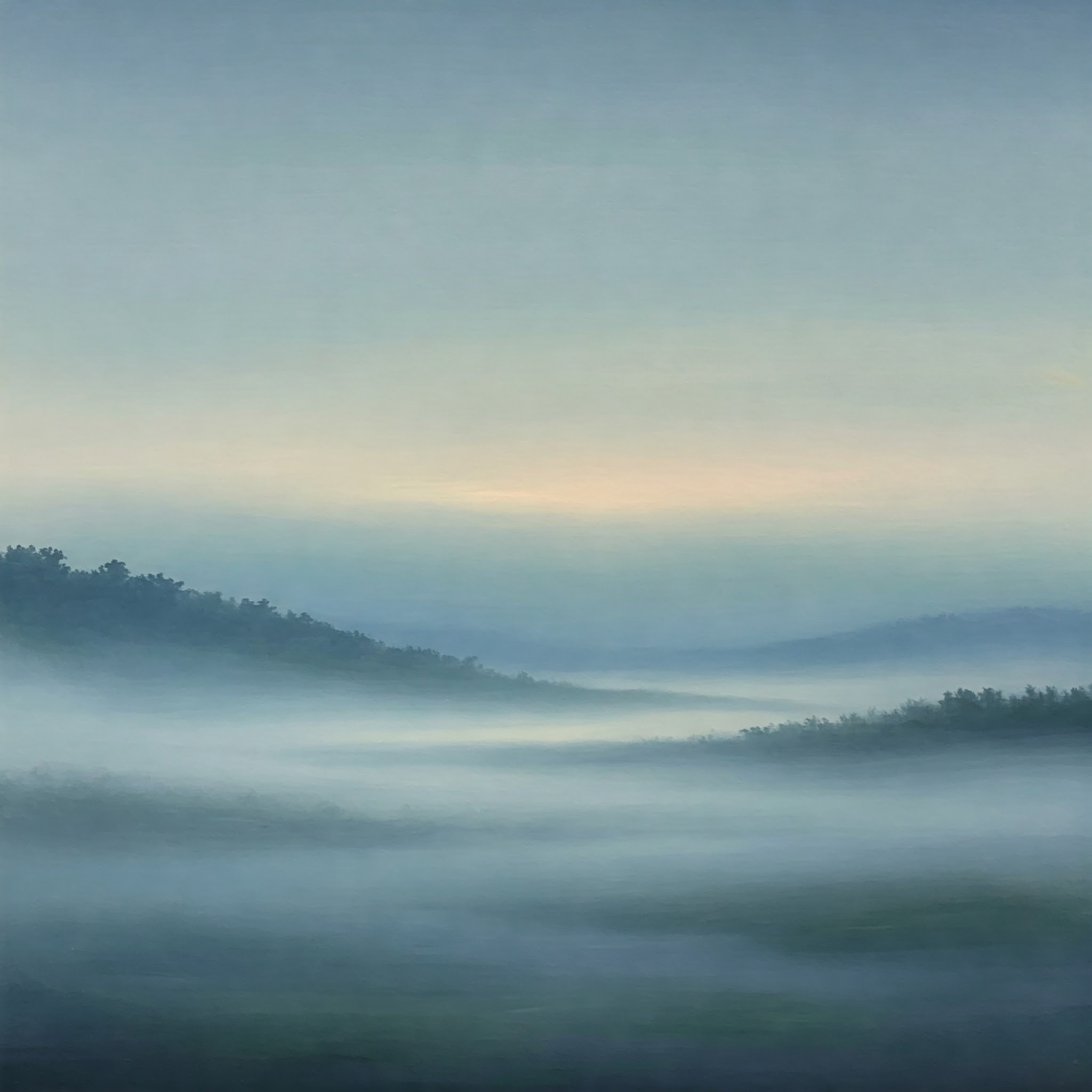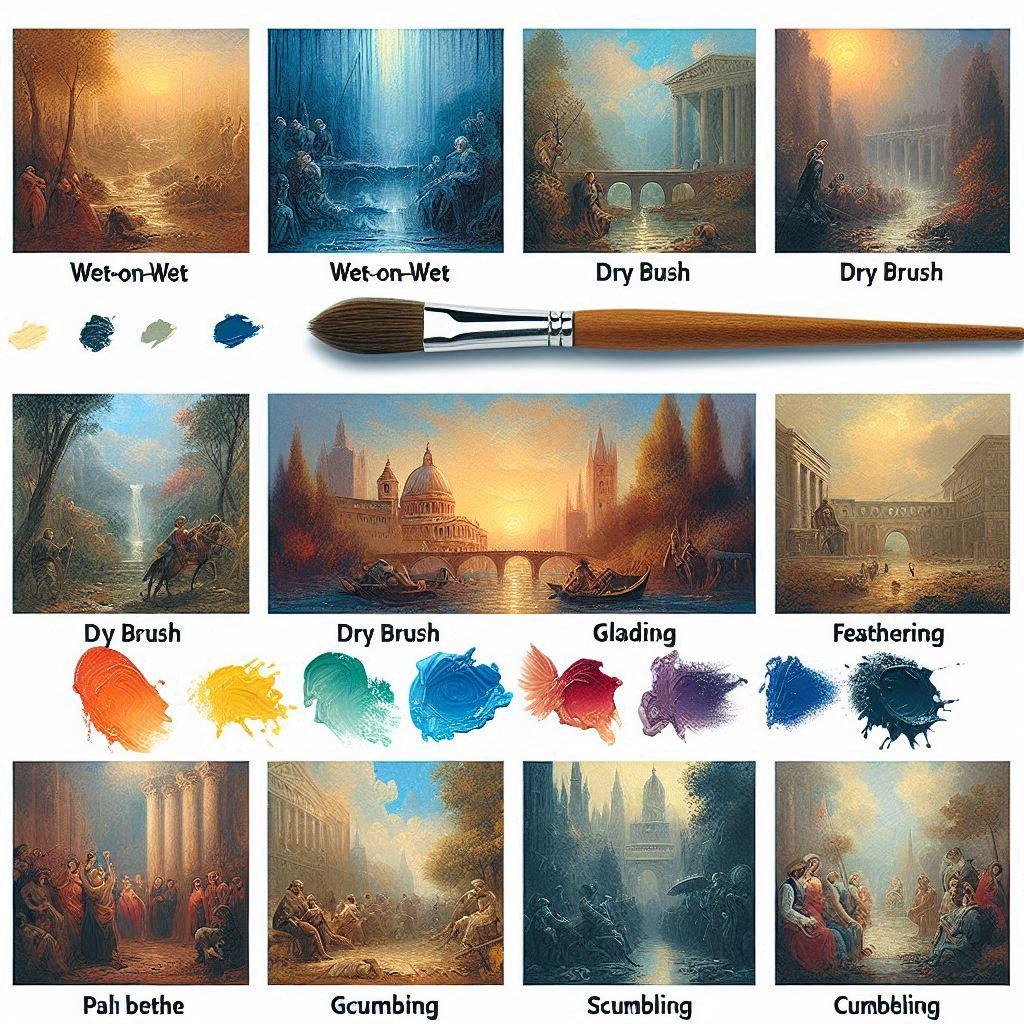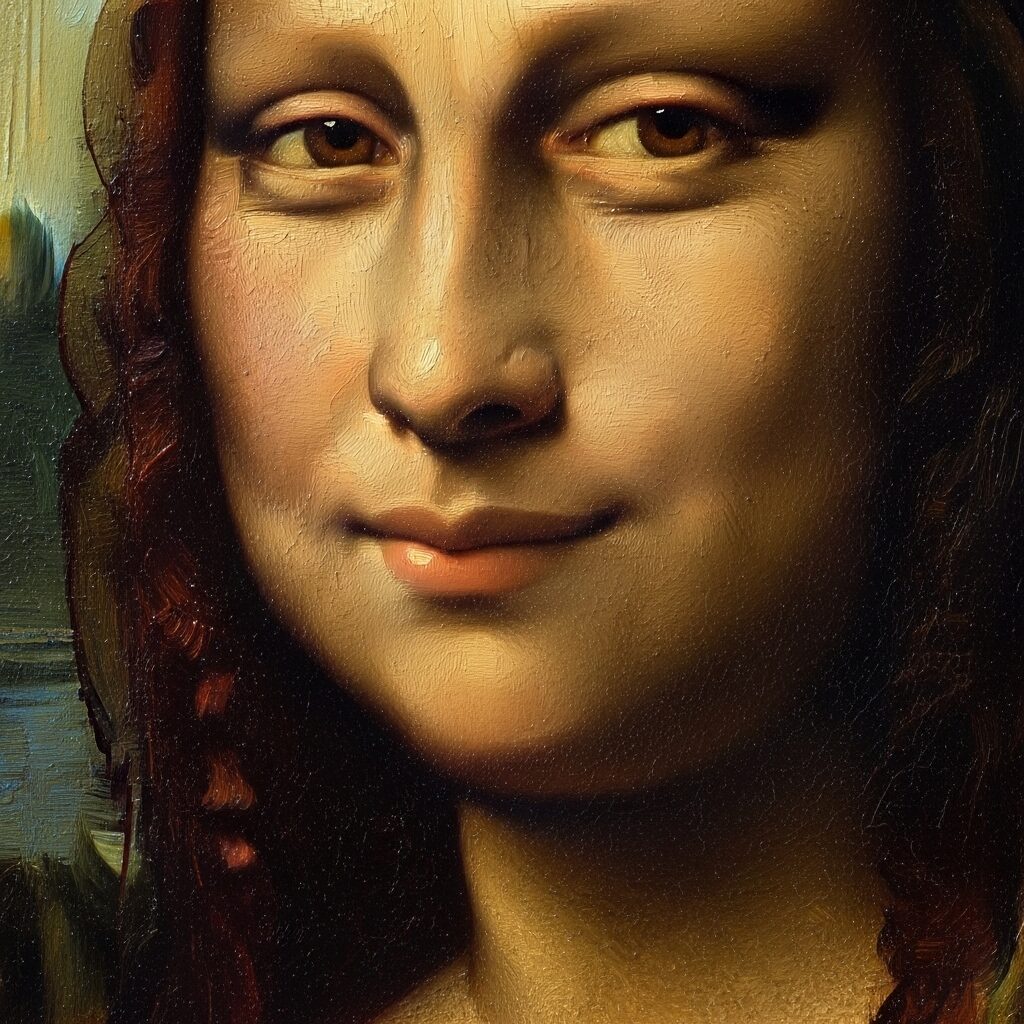
Step into the world of the High Renaissance and you’ll find paintings that seem to breathe. Figures emerge from hazy, atmospheric backgrounds, their edges soft, their expressions ambiguous and captivating. This is the magic of the sfumato technique that transcends mere representation to capture the very essence of light and shadow.
Coined from the Italian word “fumo,” meaning “smoke,” sfumato is the art of subtle, almost imperceptible transitions between colours and tones. It was the masterstroke of Leonardo da Vinci, who used it to create an unparalleled sense of realism and psychological depth.
In this guide, we’ll explore the smoky veils of sfumato, from its origins in Leonardo’s notebooks to its use in contemporary art.
What Exactly Is Sfumato?
Sfumato is a painting technique characterized by the blending of colours or tones so subtly that they melt into one another without perceptible transitions. Imagine a fine haze or smoke that softens the entire scene—that’s the visual effect.
Unlike techniques that emphasize hard lines and clear contours, sfumato is all about ambiguity. It’s most famously used to render the soft curves of the human face, the play of light on fabric, or misty, dreamlike landscapes.
From the Master’s Notebook: While Leonardo never defined sfumato in a single sentence, his notebooks are filled with observations on light and shadow. He wrote of his goal to make “the outlines of the shadows… not sharp, but blurred,” a clear reference to the philosophy behind the technique.
The Master of Smoke and Mirrors: Leonardo da Vinci

While other artists of the Renaissance used similar blending methods, Leonardo da Vinci is credited with perfecting sfumato and making it his signature. He understood that in reality, objects do not have sharp, defined outlines.
The 16th-century artist and art historian Giorgio Vasari noted Leonardo’s unique ability, describing his work as having a “grace… so that it seemed a thing of life rather than a thing of paint.“
Key Examples of Sfumato in Leonardo’s Work:
- Mona Lisa (c. 1503–1506): The quintessential example. The corners of the eyes and mouth are deliberately obscured in soft shadow, creating an enigmatic expression that shifts as you view it.
- Virgin of the Rocks (c. 1483–1486): The figures of Mary, Jesus, and John the Baptist emerge from a dark, cavernous background. The sfumato technique gives the scene a divine, mysterious atmosphere.
- John the Baptist (c. 1513–1516): Here, the technique is used to dramatic effect. The figure is almost entirely cloaked in shadow, with light softly illuminating his form, creating a powerful sense of spiritual mystery.

Beyond Leonardo: Other Masters of Sfumato

While Leonardo was the undisputed pioneer, the power of his technique quickly spread throughout Italy and beyond. Other Renaissance masters adopted sfumato, interpreting it through their own unique styles to create works of breathtaking beauty.
- Giorgione (c. 1477–1510): A leading artist of the Venetian School, Giorgione was a master of mood and atmosphere. He employed sfumato not for psychological mystery, but to create poetic, dreamlike landscapes where figures and nature seem to merge in a soft, hazy light.
- Correggio (c. 1489–1534): Known for his sensual and graceful works, Correggio used a very delicate sfumato to model his figures. His application of the technique resulted in an incredible softness and tenderness, making the skin of his subjects appear luminous and almost dissolving at the edges.
- Raphael (1483–1520): A master of the High Renaissance, Raphael learned from Leonardo’s innovations but applied them differently. He used a lighter, clearer version of sfumato to achieve an idealized harmony and grace. In works like his Madonna of the Meadow (1506), he used sfumato to gently model the faces and forms of Mary and the children, giving them a divine sweetness without Leonardo’s deep, dark shadows.
 | 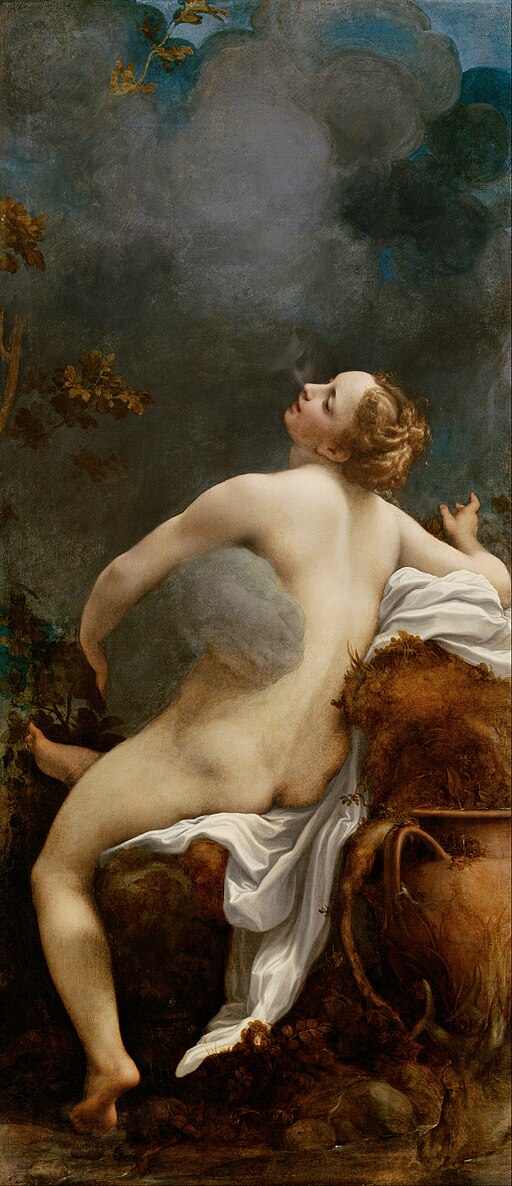 |
| Raphael’s ‘Madonna of the Meadow’ | ‘Jupiter and Io’ by Correggio |
How to Paint the Sfumato Technique: A Beginner’s Tutorial
Step-by-Step Guide for Oil Painting:
- Prepare Your Underpainting: Start with a monochromatic underpainting (a grisaille) to establish your main forms and values.
- Mix Thin Glazes: The key to sfumato is applying many thin, translucent layers of paint, called glazes. Mix a small amount of pigment with a larger amount of glazing medium (like linseed oil). The glaze should be see-through.
- Apply Your First Glaze: Using a very soft brush, apply a thin glaze over the area you want to soften.
- Soften the Edges: Before the glaze dries, use a clean, dry, soft brush (like a fan brush) to gently “feather” or “pounce” the edges of the glaze, blurring any hard lines. This is the crucial step.
- Let It Dry and Repeat: This is a technique of patience. Allow the thin layer to dry completely before applying the next. You may apply anywhere from 10 to 30 layers of glaze to achieve the desired effect.
Sfumato vs. Chiaroscuro: What’s the Difference?
These two Renaissance techniques are often confused, but they have different goals:
- Chiaroscuro: Focuses on the dramatic contrast between light and dark to create a sense of volume and drama. Think of the bold, high-contrast work of Caravaggio.
- Sfumato: Focuses on the subtle transition between light and dark to create a soft, hazy, and unified atmosphere.
You can think of it this way: Chiaroscuro is about the drama of the spotlight, while Sfumato is about the mystery of twilight.
Comparative Analysis of High Renaissance Painting Modes
| Mode | Primary Proponent(s) | Core Principle | Dominant Visual Effect | Key Artwork Example |
| Sfumato | Leonardo da Vinci | Dissolving contours and unifying the picture through subtle, tonal glazes. | Smoky, hazy, atmospheric unity; psychological mystery and scientific realism. | Mona Lisa |
| Unione | Raphael | Blending colors seamlessly while retaining their individual vibrancy and hue. | Harmonious, graceful, and idealized softness without the use of heavy, dark shadows. | Madonna of the Meadow |
| Chiaroscuro | Caravaggio, Rembrandt | Using strong, dramatic contrasts between an intense light source and deep shadow. | High drama, theatricality, intense volume, and a focused narrative spotlight. | The Calling of Saint Matthew |
| Cangiante | Michelangelo | Modeling form by changing to a different color or hue, rather than just a lighter or darker shade of the same color (e.g., a shadow on a yellow robe is painted in red). | Sculptural, vibrant, and powerful form; often uses non-naturalistic color for expressive force. | Doni Tondo / Sistine Chapel Ceiling |
Sfumato’s Enduring Influence: The Technique in Contemporary Art
While sfumato is intrinsically linked to the Renaissance, its core principles of atmosphere and ambiguity are timeless. Contemporary artists across various media continue to explore its effects, proving that the technique is far from a historical relic.
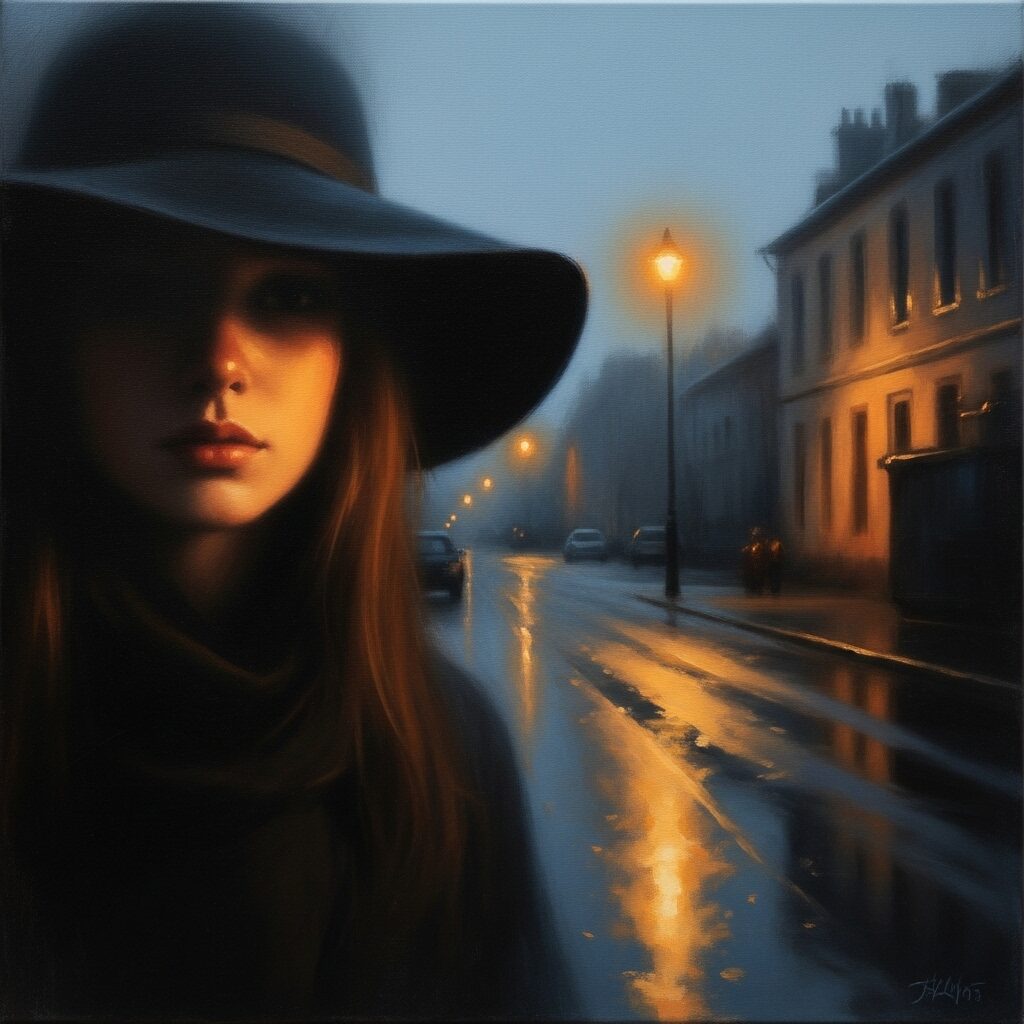
- In Contemporary Painting: Many modern realists and hyperrealists adapt classical glazing techniques to achieve an incredible softness and depth that echoes sfumato. They use airbrushes or extremely soft brushes to create flawless gradients that give their subjects a lifelike, almost digital smoothness.
- In Photography and Film: The principles of sfumato are alive and well in lens-based media. Photographers use soft-focus lenses or wide apertures to create a shallow depth of field, causing the background to melt away into a beautiful blur known as bokeh. Cinematographers often use haze or fog machines to introduce a physical “atmosphere” into a scene, softening light and creating a moody, dreamlike quality reminiscent of Leonardo’s landscapes.
- In Digital Art: Digital artists have an entire arsenal of tools to replicate and expand upon sfumato. Software like Procreate and Adobe Photoshop allows for perfect blending with soft airbrushes, smudge tools, and adjustable layer opacities. Artists can create smoky, ethereal effects with a level of control and speed the Old Masters could only have dreamed of.
The quest to capture not just form, but atmosphere itself, remains a powerful artistic drive. Whether through a lens, a stylus, or a traditional brush, the spirit of sfumato continues to shape the way we create and see art.
Frequently Asked Questions about Sfumato Technique
1. Is sfumato only used in oil painting? While it is most famously associated with the slow-drying nature of oil paints, similar soft-blending effects can be achieved with acrylics using blending mediums, or with pastels and charcoal through physical smudging.
2. Besides the artists mentioned, are there other famous examples? Yes, many artists of the Lombard school, who were followers of Leonardo, also heavily used the technique. The influence can even be seen centuries later in the soft, atmospheric works of painters like Jean-Auguste-Dominique Ingres.
3. Is sfumato a difficult technique to learn? It is considered an advanced technique because it requires immense patience and a subtle understanding of colour, tone, and layering. However, beginners can start practicing the basic principles of glazing and soft-edge blending on simple subjects.
Further Reading and Sources
To deepen your understanding, we recommend exploring these authoritative sources:
- The National Gallery, London – “Leonardo da Vinci“
- “Leonardo da Vinci” by Walter Isaacson
- “Lives of the Artists” by Giorgio Vasari
By mastering the principles of the sfumato technique, you can add a new level of depth, realism, and emotion to your artwork, connecting with a technique that has captivated viewers for over 500 years.

